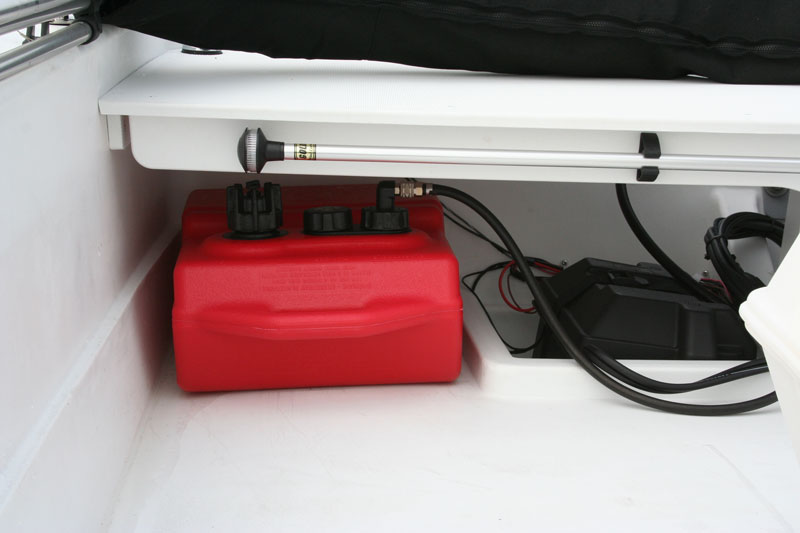According to BoatUS statistics, dead batteries account for almost 10 percent of all the calls for assistance their towboats receive. In fact, only mechanical failure and running aground are more common reasons, and dead batteries tie with running out of fuel for the third most common problem requiring assistance. Running out of fuel is something you can prevent yourself with a little bit of foresight, but a dead battery? Well, in many cases yes, you can prevent that too. Most boaters more or less ignore their batteries right up until the day their boat doesn’t start. But take heed to these 10 tips, and your engine is sure to turn over the next time you twist that key.

- Get one of the new lithium-ion portable jumper packs, and leave it on your boat. These things are incredibly compact and inexpensive. Our main concern is that you don’t miss out on fishing due to battery issues (then there’s that safety thing, too), and one of these little juice boxes can save a trip or save you from needing a tow home if you miss any of the other nine items below and your batteries leave you high and dry.
- If your boat has two batteries, stop running it with the battery switch in the “All” position. Set to All, if you have a problem you’ll drain down both batteries until they’re dead. Set to an individual battery you’ll always have another kept in reserve. Boats with two batteries and 1, 2, All positions should be operated in an alternating pattern; run on 1 one day and on 2 the next. That way you’ll work the batteries equally but always have one fresh and ready.
- Replace your boat battery on a schedule, not when it gets weak. Boat batteries have a limited lifespan, and most of us will notice slower cranking or dimmer lights long before that lifespan ends. Anytime you notice sub-par performance from a fully charged battery, swap it out immediately. If you get five years of service out of one, consider yourself very lucky and replace it before it has a chance to go bad. And if your boat has multiple batteries, replace them on a rotating basis so you always have at least one relatively fresh one aboard.
- When replacing a boat battery, don’t mix and match. Always replace it with the same capacity and type you’re taking out. Mixing and matching can lead to over- or under-charging of one or the other, shortening its lifespan.
- Clean the terminals on a regular basis. This should be part of your winterizing routine, even if they aren’t caked in crud. And after cleaning them off treat them to a blast of CRC Marine Battery Terminal Protector.
- Since we just mentioned winterizing: if your boat will be sitting for more than a couple of weeks at a time, pull the batteries, put them in a well-ventilated area of controlled climate like a garage or basement, and put them on a battery maintainer or trickle-charger.
- Turn off the battery switch each and every time you leave the boat. Electrical leaks, switches accidentally left on, and accessories that continue sucking even a tiny amount of juice after they’re turned off (like the clock on a stereo) can all eventually lead to a lack of power when you’re ready to cast off the lines and start casting.
- Keep track of water levels in lead-acid batteries, but charge your batteries up prior to adding water, not after (though if the water level is below the plates it’s best to add enough to cover them before charging). Fill to about an eighth of an inch to the top (distilled water is generally recommended), and if you accidentally overfill the battery, carefully wipe it down as some acid may have sloshed out with the water.
- Visually inspect your battery casing for cracks, and if you see any, replace the battery no matter how small they may be. Boat batteries take a lot of pounding, and physical damage occurs a lot more often than it does with the automotive variety. Note: this is one of the reasons why it’s critical a boat battery be thoroughly secured in place. If it isn’t strapped down securely in a battery box there’s a good chance damage will occur before too long, especially on small boats apt to take a pounding.
- Never put an automotive battery in a boat. Marine batteries are ruggedized with thicker internal plates and casings, and if you put a car battery in your boat it probably won’t last for long.

What about the new LiFePO4 lithium batteries we all keep hearing about? How do they change the game? Up until now, they’ve mostly been designed and marketed for deep-cycle applications. And we’ve found them amazingly good for that purpose — with far more useable capacity per amp-hour, half as much weight, and over twice the expected lifetime. Lithium starting batteries intended specifically for marine use, however, are very new. And although several have been introduced in the past year or two we don’t yet have any hands-on experience with them. Thus, we’re not about to make any comparisons or assertions regarding their performance. But that said, they certainly hold a lot of promise.
So: you say you want to go fishing whenever you can, and you don’t want a dead battery to ever stand in the way? Pay more attention to that power cell and it won’t prevent you from pursuing that passion. Oh yeah, and remember to fill up the fuel tank...